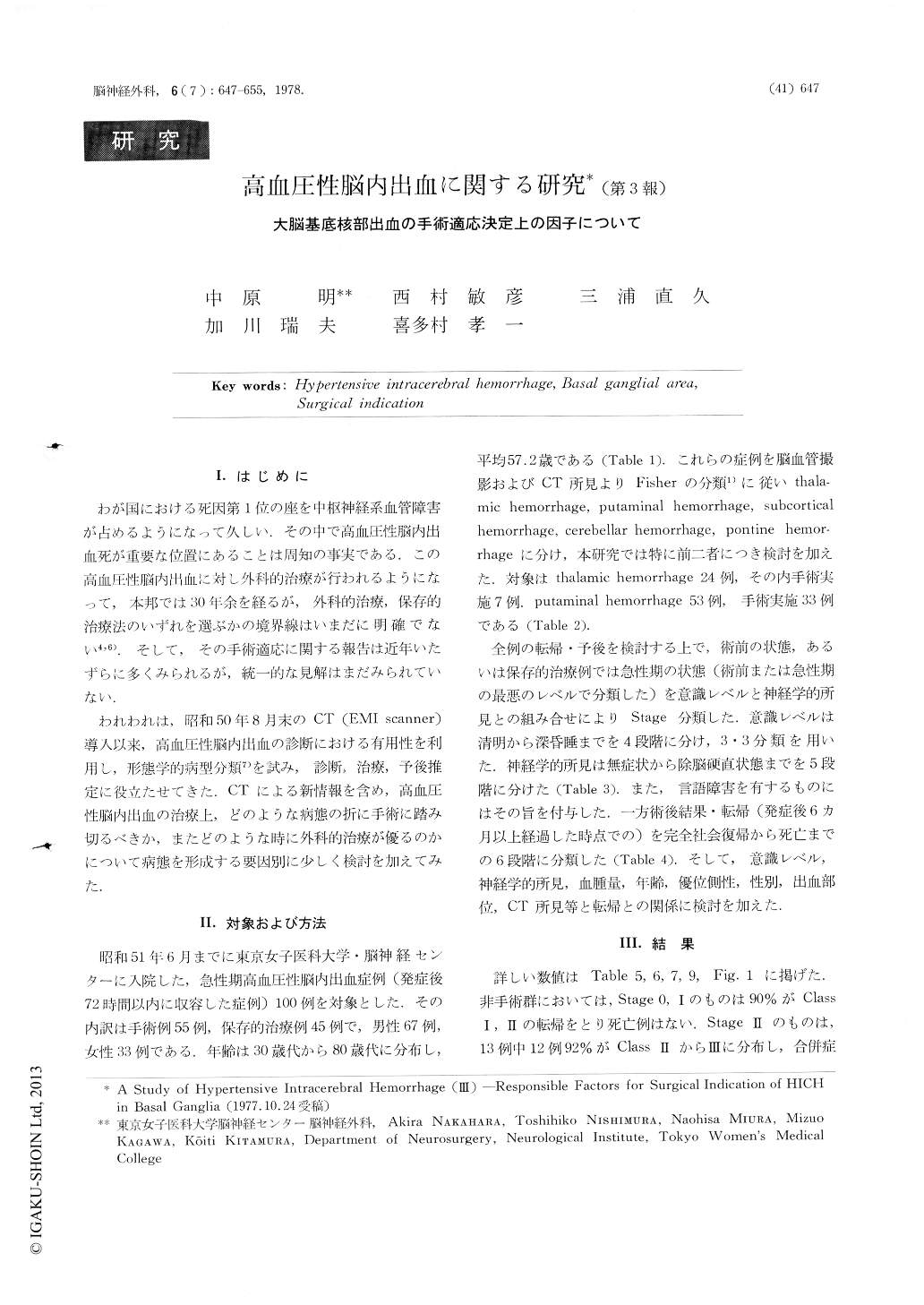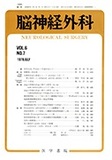Japanese
English
- 有料閲覧
- Abstract 文献概要
- 1ページ目 Look Inside
Ⅰ.はじめに
わが国における死因第1位の座を中枢神経系血管障害が占めるようになって久しい.その中で高血圧性脳内出血死が重要な位置にあることは周知の事実である.この高血圧性脳内出血に対し外科的治療が行われるようになって,本邦では30年余を経るが,外科的治療,保存的治療法のいずれを選ぶかの境界線はいまだに明確でない4,6).そして,その手術適応に関する報告は近年いたずらに多くみられるが,統一的な見解はまだみられていない.
われわれは,昭和50年8月末のCT(EMI scanner)導入以来,高血圧性脳内出血の診断における有用性を利用し,形態学的病型分類7)を試み,診断,治療,予後推定に役立たせてきた.CTによる新情報を含め,高血圧性脳内出血の治療上,どのような病態の折に手術に踏み切るべきか,またどのような時に外科的治療が優るのかについて病態を形成する要因別に少しく検討を加えてみた.
Important factors for surgical indication of hypertensive intracerebral hemorrhage (HICH), especially in the basal ganglial area, are studied and reported based on 100 consecutive cases of HICH (male: 67, female: 33). The average of age 57.2 years old.
The most important factor, the surgical indication depends on, is the "Stage" in an acute phase, which is classified into four degrees based on the level of consciousness and into five degrees based on the neurological deficits. To those in the Stage 0 and I, there have no necessity of surgery.

Copyright © 1978, Igaku-Shoin Ltd. All rights reserved.


